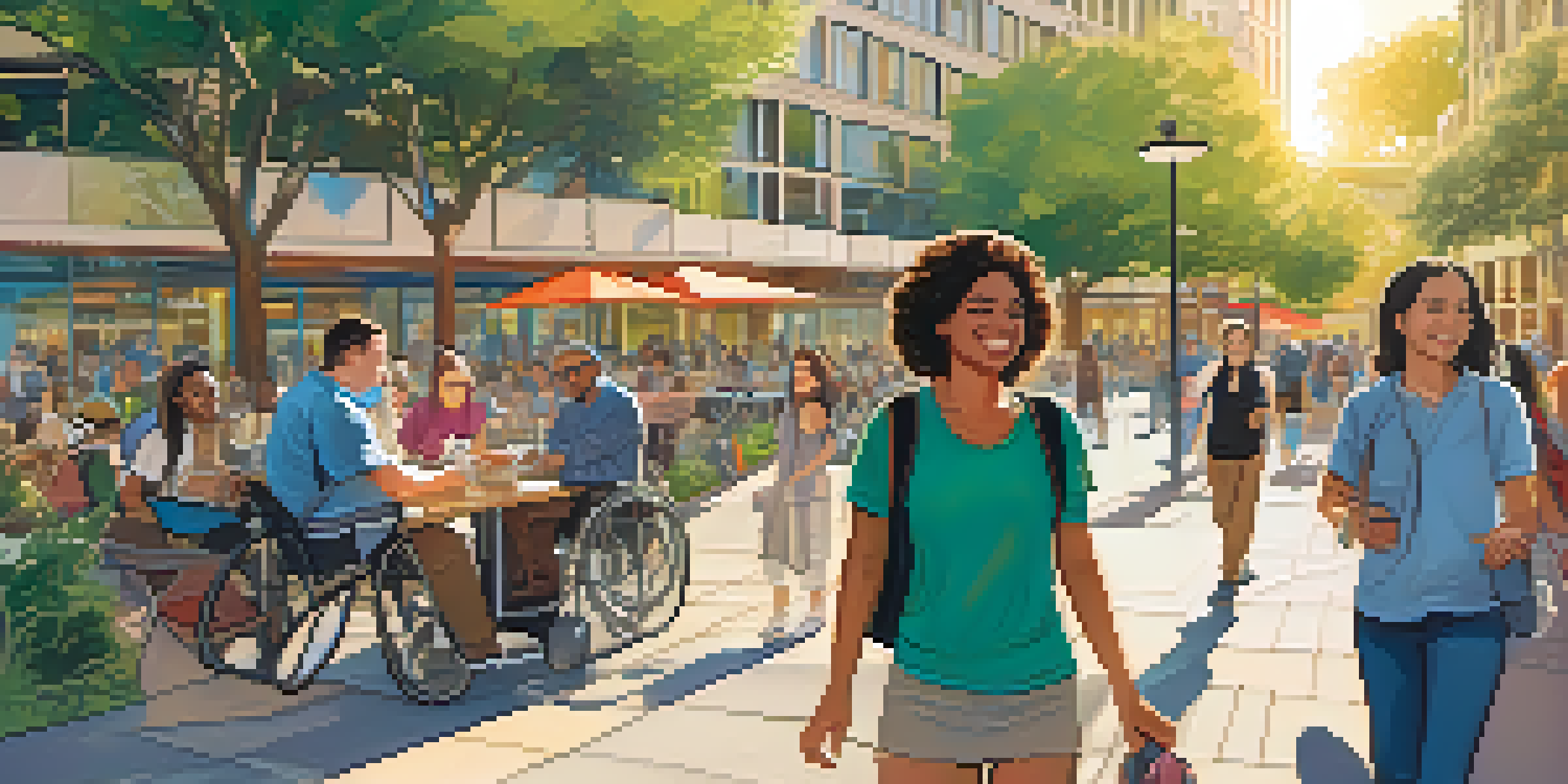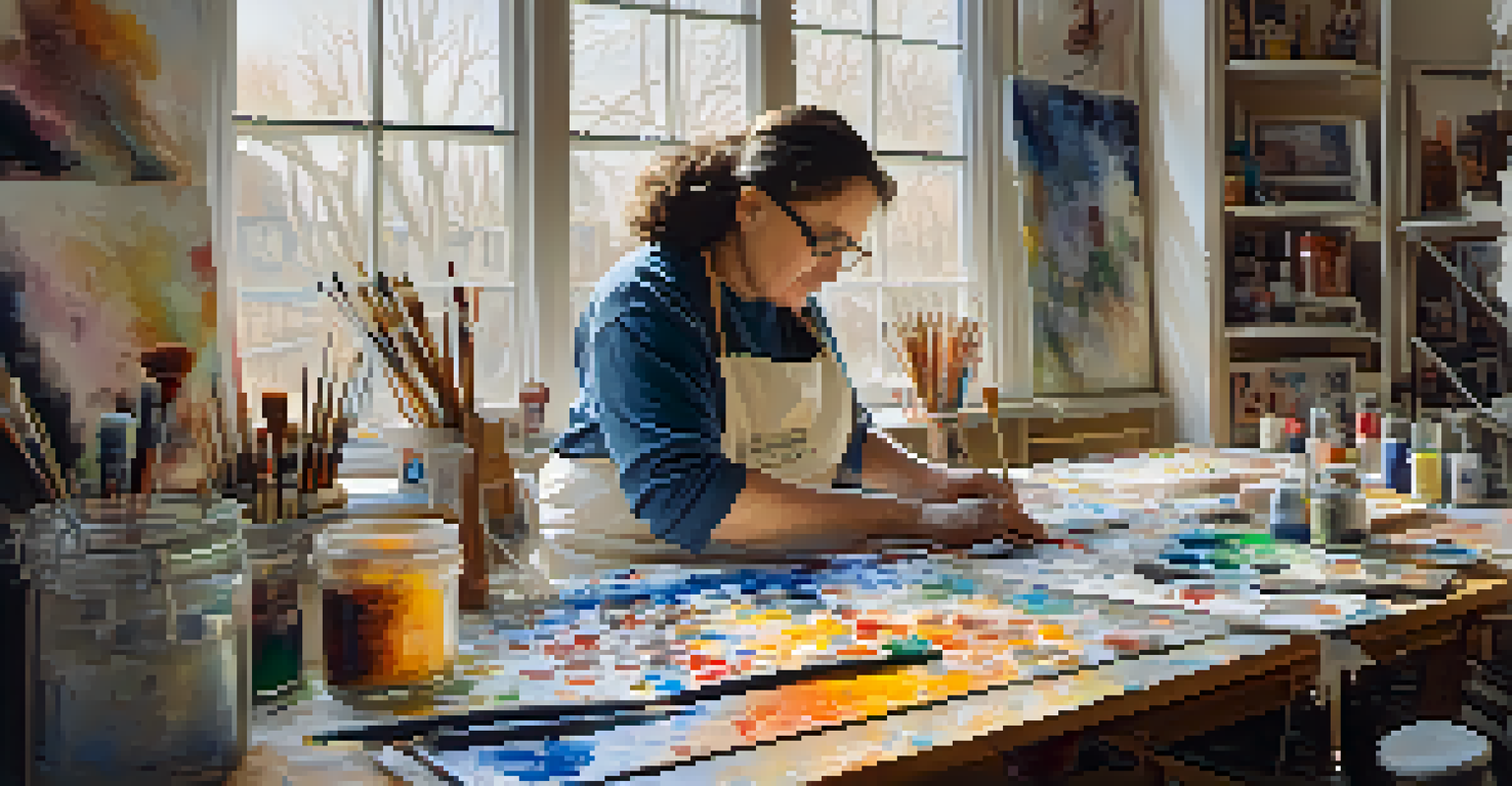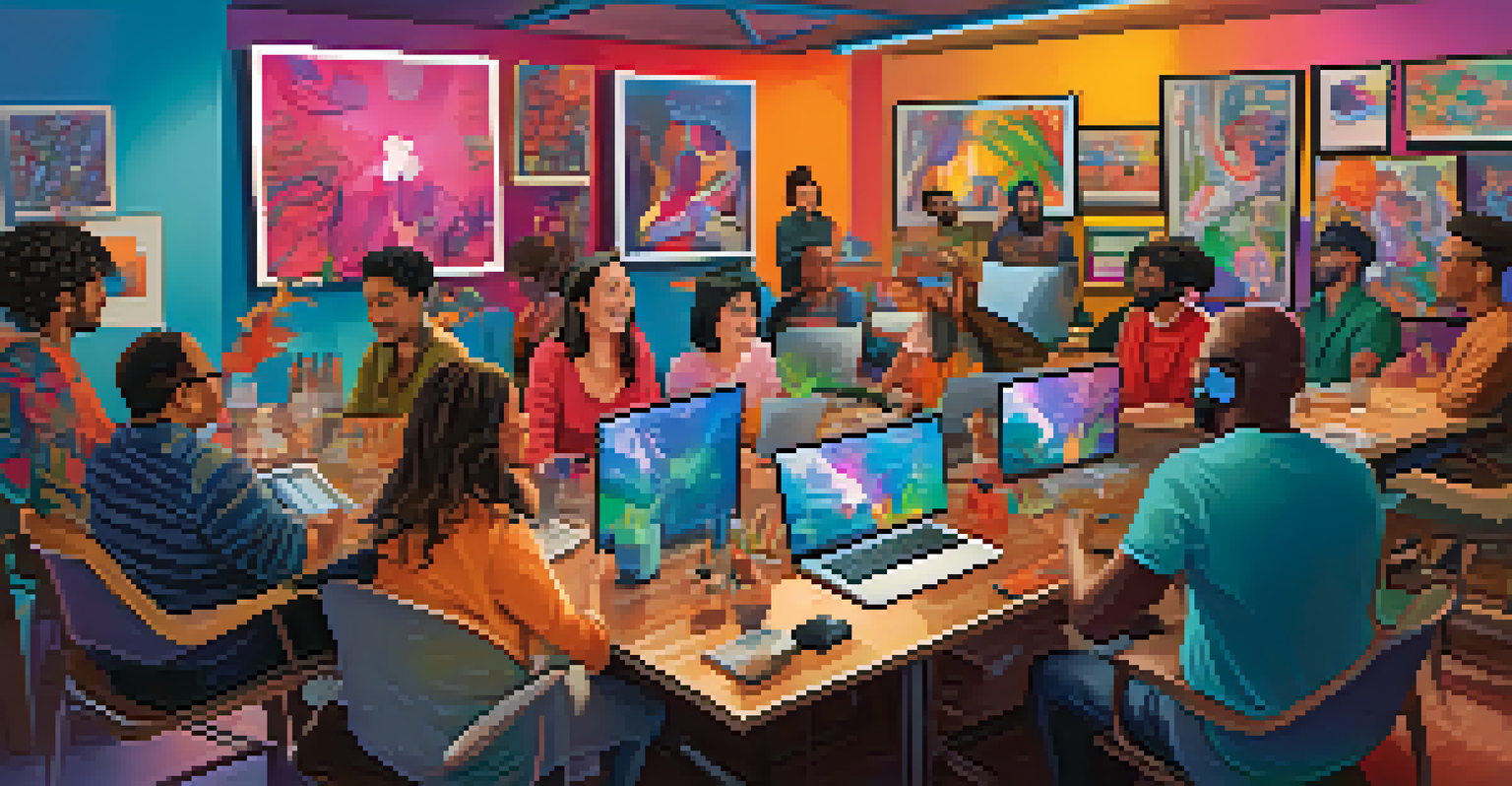Disability and the Art of Storytelling: Visual Narratives

Understanding Visual Narratives in Disability Contexts
Visual narratives encompass a range of storytelling methods that utilize images, illustrations, and other visual forms to convey messages. For individuals with disabilities, these narratives can serve as powerful tools for expression, allowing them to share their experiences in a way that transcends traditional text. This form of storytelling is particularly impactful as it can communicate complex emotions and scenarios, making the stories accessible to a broader audience.
The more we can focus on the stories of individuals with disabilities, the more we can understand the diverse experiences they go through and the resilience they show every day.
Moreover, visual narratives often engage the viewer in a more immediate way, fostering empathy and understanding. When a person encounters a story through images, they can connect with the emotional core of the experience, often eliciting a more profound response than written words alone. This connection is crucial in promoting awareness about the diverse experiences of people with disabilities.
As we explore visual narratives, it’s vital to appreciate the unique perspectives that disabled artists bring to storytelling. They infuse their work with authenticity and depth, often challenging stereotypes and misconceptions about disability. This approach not only enriches the narrative but also empowers the creators to take ownership of their stories.
The Role of Technology in Visual Storytelling
Advancements in technology have dramatically transformed the landscape of visual storytelling. Tools such as smartphones, tablets, and various apps enable individuals with disabilities to create and share their stories more easily and creatively. This democratization of storytelling allows for a diverse range of voices to be heard, fostering a richer narrative tapestry.

For instance, platforms like Instagram and TikTok have become popular spaces for sharing visual stories, where users can incorporate captions, filters, and other features to enhance their narratives. These platforms not only provide a stage for disabled artists but also create communities where stories can be shared and celebrated. This sense of belonging can be empowering for those who often feel marginalized.
Visual Narratives Foster Understanding
Visual storytelling allows individuals with disabilities to share their experiences in a compelling way that promotes empathy and awareness.
Additionally, assistive technologies, such as speech-to-text software and screen readers, further enhance accessibility in visual storytelling. By breaking down barriers, technology not only amplifies disabled voices but also encourages more inclusive narratives, ensuring that everyone has a chance to share their unique experiences.
The Power of Personal Stories in Visual Media
Personal stories serve as the heart of visual narratives, especially for individuals with disabilities. These stories often highlight unique challenges, triumphs, and everyday life experiences, allowing viewers to gain insights into the realities faced by disabled individuals. By sharing their personal journeys, artists create a bridge of understanding that can foster compassion and awareness in society.
Art is a powerful tool for social change; it can amplify marginalized voices and highlight the need for empathy and understanding in society.
Moreover, personal narratives can challenge societal norms and misconceptions about disability. For example, a visual story that showcases a day in the life of a person with a disability can dispel stereotypes and highlight the versatility and resilience of disabled individuals. This shift in perspective can inspire others to embrace diversity and promote acceptance.
Ultimately, personal stories in visual media resonate deeply with audiences, making them more relatable and impactful. They remind us that behind every disability is a unique individual with dreams, struggles, and triumphs, encouraging a more human connection through storytelling.
Visual Storytelling as a Tool for Advocacy
Visual storytelling can be a powerful advocacy tool for individuals with disabilities. By using images and narratives, creators can highlight important issues, raise awareness, and promote social change. This approach not only informs viewers but also encourages them to take action, whether it’s through supporting policies, participating in discussions, or simply amplifying disabled voices.
Many successful campaigns have utilized visual narratives to advocate for disability rights, showcasing real stories and experiences that resonate with the public. For instance, a documentary featuring the lives of disabled individuals can spark conversations about accessibility and inclusion. These narratives often drive home the message that disability is not just a personal issue but a societal concern that requires collective action.
Technology Empowers Disabled Voices
Advancements in technology provide disabled artists with tools to create and share their narratives, ensuring a wider range of voices are heard.
Moreover, visual storytelling can connect individuals with shared experiences, fostering a sense of solidarity among disabled communities. By coming together to share their stories, these individuals can amplify their voices and advocate for change in a united front, ultimately leading to a more inclusive society.
Exploring Different Forms of Visual Narratives
Visual narratives can take many forms, each offering unique ways to tell stories. From graphic novels and comics to animations and photography, the possibilities are endless. Each medium provides different tools for expression, allowing disabled artists to choose the format that best aligns with their message and style.
For example, graphic novels can combine both text and images to create immersive experiences, often delving deep into personal stories and societal issues. On the other hand, photography can capture candid moments and emotions, providing a raw and authentic depiction of life with a disability. These varied forms of visual narratives enable artists to experiment and find the perfect way to convey their stories.
As we explore these different forms, it’s essential to recognize the creativity and innovation that disabled artists bring to visual storytelling. By using their unique perspectives, they can redefine how stories are told, pushing the boundaries of traditional narratives and inviting audiences to see the world through their eyes.
The Importance of Representation in Visual Storytelling
Representation plays a crucial role in visual storytelling, particularly for individuals with disabilities. When disabled artists tell their own stories, they provide authentic representations that challenge stereotypes and misrepresentations often found in mainstream media. This authenticity not only empowers the creators but also resonates with audiences who seek to see their experiences reflected in the stories they consume.
Moreover, increased representation in visual narratives can lead to greater awareness and understanding of the diverse experiences within the disability community. When audiences encounter a variety of narratives, they are more likely to appreciate the complexities of disability beyond a singular narrative. This breadth of representation fosters empathy and encourages more inclusive societal attitudes.
Representation Enhances Storytelling
Authentic representation of disabled individuals in visual narratives challenges stereotypes and fosters a more inclusive understanding of diverse experiences.
Ultimately, the importance of representation cannot be overstated; it enriches the storytelling landscape and ensures that the voices of disabled individuals are heard and valued. It helps to create a world where everyone can see themselves reflected in the stories around them, fostering a sense of belonging and acceptance.
Future Directions for Disability and Visual Storytelling
As we look to the future, the landscape of disability and visual storytelling is bound to evolve. With the rise of digital media and new technologies, there will be even more opportunities for disabled artists to share their stories in innovative ways. This evolution can lead to richer, more diverse narratives that challenge existing norms and foster inclusivity.
Additionally, collaborations between disabled artists and other creators can open doors to new formats and storytelling techniques. By working together, they can blend different perspectives and artistic styles, enriching the narratives they create. This collaborative spirit can push the boundaries of visual storytelling and lead to groundbreaking works that resonate with a wider audience.

Ultimately, the future of disability and visual storytelling holds immense potential. As more disabled voices emerge and share their narratives, we can expect a more inclusive and representative storytelling landscape that celebrates diversity and fosters understanding across communities.